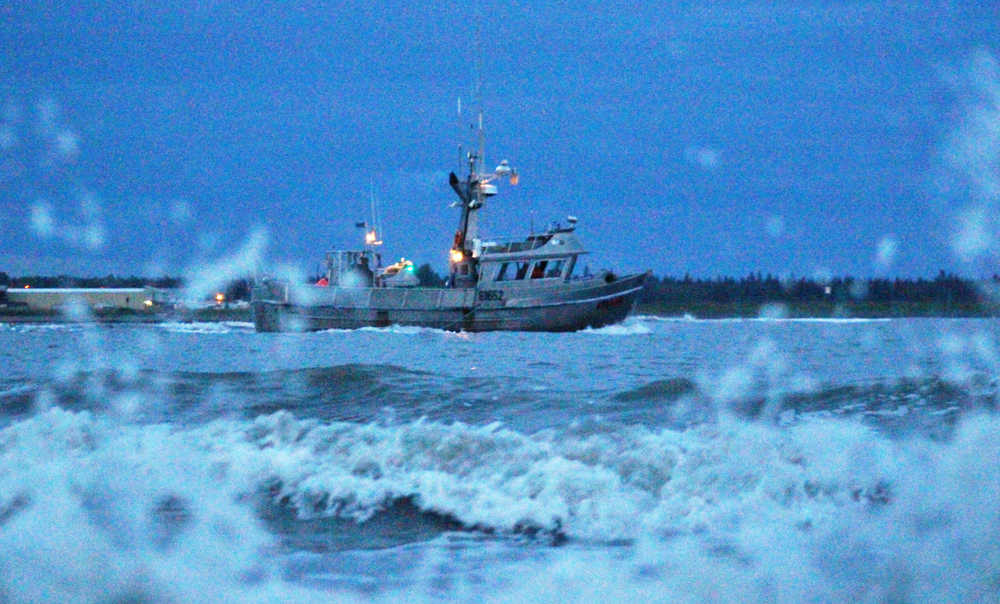The Kenai Peninsula’s economy depends even more on the ocean and rivers than is apparent on paper.
Some are obvious: fishing, shipping and marine fishing guiding all depend on the ocean directly. However, others — such as processing, oil and gas support services and fishing gear retailers — only “touch” the water and may not be counted on a cursory glance. When added together, about 3,400 people on the peninsula work in a maritime-related profession, the most of any sector in the region, according to the 2016 Situations and Prospects report from the Kenai Peninsula Economic Development District.
The annual report, which provides data and forward-looking estimates on the economy for the Kenai Peninsula, details a growing maritime sector that paid approximately $177 million in wages in 2014, the most of any industry in the region.
Most of the employment is in commercial fishing — almost half the workers are self-employed commercial fishermen, as are the vast majority of the earnings, according to the report.
The Alaska Department of Labor and Workforce Development would not classify some maritime-related professions, such as fish processing, as farming, fishing or agriculture — they are classed as manufacturing. That separates some of the data, said Rick Roeske, the executive director of KPEDD. Because the economy on the peninsula is relatively small compared to cities like Anchorage, KPEDD has to blend together some data for confidentiality purposes, he said.
“You wouldn’t think that the peninsula manufactures a lot, but when you look at that data, 80 percent of it is fish processing,” Roeske said.
Fishing is a major driver in the four largest cities on the peninsula — Homer, Kenai Soldotna and Seward. The three ports in Homer, Kenai and Seward landed 85.2 million pounds of commercial fish in 2014, with Homer leading — its commercial fishermen landed 74 percent of all pounds of fish that Kenai Peninsula residents harvested and earned 65 percent of the gross earnings that year, according to the report.
However, other industries that depend on the sea are also growing. Cook Inlet is home to a vast number of seafaring boats, supporting a large boat service industry. More cruise ships are coming to Seward and Homer each year as well, bringing in tourism revenue and funds from the state’s commercial passenger vessel excise tax.
City administrations in Seward and Homer are in the process of improving their ports. Homer recently finished a paving project to provide access to its deep water dock. The city is also in the process of conducting a feasibility study to expand the dock, which should be finished and sent to the Homer City Council for review in the fall, said Bryan Hawkins, the harbormaster.
“There was a lot of survey and interviews with the customer base that use the dock now and expanding that out to other possible customers, to talk about Homer as a hub and connection point,” Hawkins said.
The deep water dock currently serves as the port for the handful of cruise ships that come to Homer each summer as well as a dock for industry, as in the case of the jack-up rig Randolph Yost, which spent the month of May at the dock before Furie Operating Alaska moved it to its Kitchen Lights Unit near Nikiski to drill additional gas wells.
Seward recently completed work on its harbor, replacing floats and installing lighting, said Matt Chase, the deputy harbormaster for Seward. The work was completed in April and replaced many older sections of the floats for the first time since the 1960s, he said.
The city is also in the process of building a breakwater near the Seward Marine Industrial Center on the east side of Resurrection Bay, which will establish more harbor space for larger vessels, Chase said. In addition to the breakwater, the city has also been working on the uplands to lease out more space to businesses, and many have shown interest, he said.
“When we started getting the permits and the rocks (for the breakwater) and the bids, it was like the gold rush was on,” Chase said.
Homer and Seward saw more cruise ships arrive last year — 19 percent more for Seward and twice as many for Homer between 2014 and 2015, according to the Situations and Prospects report. Hawkins said the number of cruise ships varies from year to year but has been relatively consistent for the past few years; Chase estimated that approximately three cruise ships arrive per week in Seward.
Tourism continues to grow on the Kenai Peninsula, with increasing visits and a predicted record-breaking year for 2016 amid an oil and gas downturn and a state budget crisis. Year over year for five years, guided water and land activities have increased, with sharp upticks in 2014 and 2015. Most of the industries that showed significant growth in 2015 were related to tourism, according to the report.
Although guided land activities are included in those numbers, gross sales from guided water activities outpace them by more than 19 times — more than $65 million to approximately $3.4 million in 2015, according to figures from the Kenai Peninsula Borough’s finance office.
The Situations and Prospects report works in complement with KPEDD’s submitted draft Comprehensive Economic Development Strategy plan, which encompasses five-year goals for the peninsula’s economy. KPEDD wants to provide information and collaborate with the various governments and organizations around the peninsula to work toward economic goals in the next few years, Roeske said.
“Although we’re connected by the road and the internet, we’re all pretty focused on our own little areas,” Roeske said. “We’re going to try to get these silo groups to become more cluster groups.”
Reach Elizabeth Earl at elizabeth.earl@peninsulaclarion.com.


